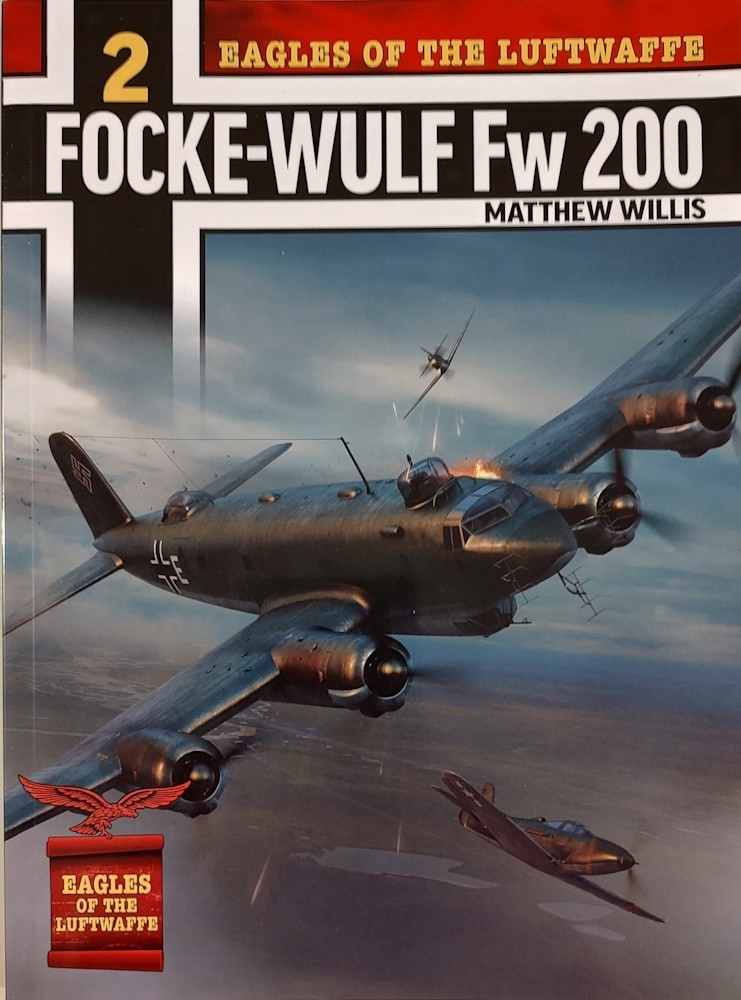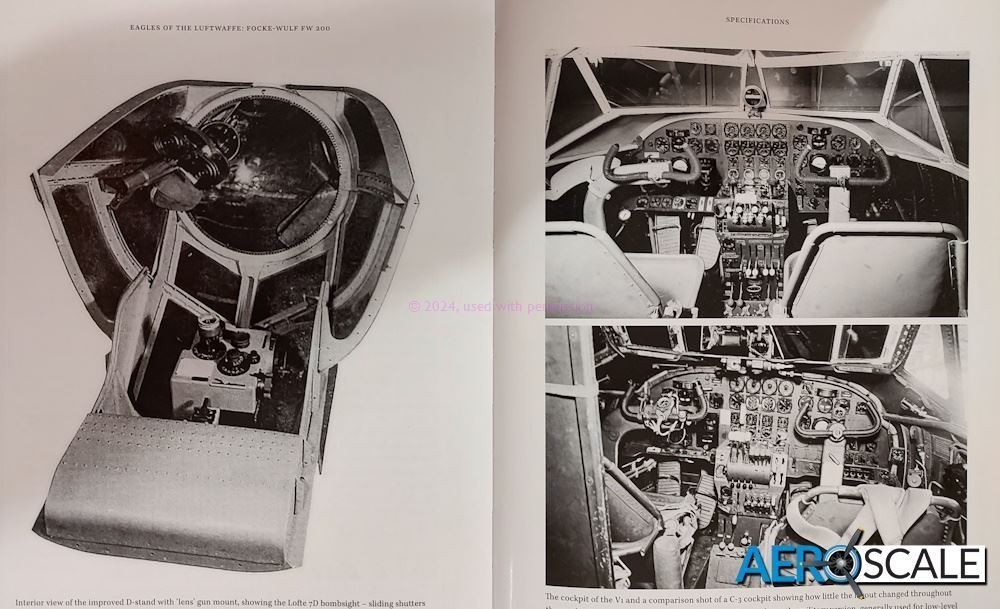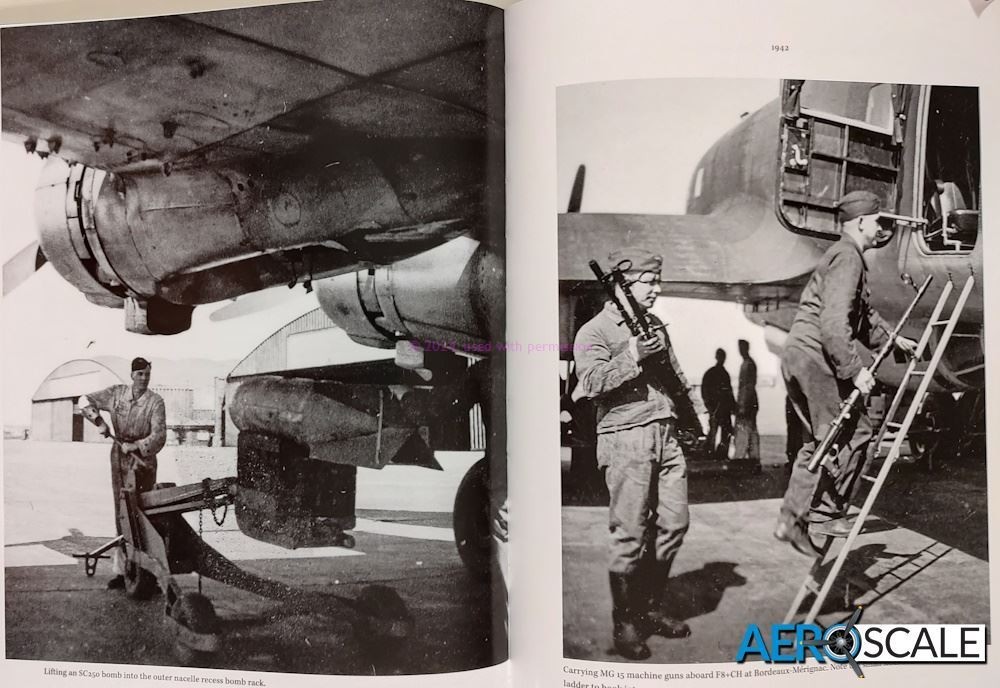
Foreword
Winston Churchill dubbed the Focke-Wulf Fw 200 "the scourge of the Atlantic." Modelers and Luftwaffe historians find it a favorite subject. It was a heavily-armed long-range bomber which, in conjunction with Nazi Germany's submarines, almost strangled England. Until the advent of proper tactics and heavier armament, it was a tough nut to crack by Allied fighter pilots. Not only was the type employed as a maritime reconnaissance anti-shipping bomber, it was also used as a conventional bomber, cargo carrier and transport, and guided bomb platform. As a transport it carried troops, evacuated wounded, and was a VIP transport for Hitler and other high-ranking Nazis. Before those tasks, it was an elegant advanced world-class airliner which helped propel Deutsche Luft Hansa A.G. to international fame. This book examines the career of the aircraft and its impact upon the European war.
Introduction
Eagles of the Luftwaffe: Focke-Wulf Fw 200 is a new title for the interest of modelers and historians of the Fw 200, a subject very popular with those interested in Third Reich aircraft. From Tempest Books (an imprint of Morton Books), authored by Matthew Willis, this softcover format 7.25 x 9.75-in. size book is 146 pages (including front and back matter), catalogued with ISBN 9781911658658. Oddly, my copy is Eagles of the Luftwaffe number 2, while the title as shown on the website is number 3. Another website peculiarity is listing the length as 116 pages while my copy has 146.
Tempest Books describes the content as based on archival research, fully illustrated, with new artwork, and covering all Fw 200 models. They introduce the subject thusly;
The Focke-Wulf Fw 200 Condor was conceived for peace but turned to a warlike purpose savaging convoys bringing vital supplies to Britain. The aircraft Churchill called “the scourge of the Atlantic” became synonymous with the struggle to supply the Allies by sea. As a truly long-range reconnaissance bomber, the Condor acted as the eyes and ears of the Kriegsmarine, while packing a powerful punch itself. As the Allies stepped up their efforts to address the vulnerability of their convoys to aerial reconnaissance and attack, however, the Fw 200’s weaknesses became ever more apparent.
Naval aviation author Matthew Willis tackles the career of the feared aircraft, from its beginnings as a cutting-edge airliner, through its early development into a military transport and a maritime bomber and ‘spyplane’, including the addition of ever more armament and technology such as radar and the carriage of radio-controlled glider bombs. From the expanses of the Atlantic, via the freezing Arctic seas to the heat and dust of North Africa, the operational history of the Fw 200 is examined.
Modelers have a choice of Condors in scales of 1/48 to 1/144, and even 3D printed in 1/750. I, too, am a fan of the Fw 200 Condor and after reading through this book, I am a fan of this Eagles of the Luftwaffe title. Let us look into this exploration of the warplane that Winston Churchill dubbed "the scourge of the Atlantic."
Content
Eagles of the Luftwaffe: Focke-Wulf Fw 200 is organized into eight chapters and sections:
1. 1936-39
2. 1940
3. 1941
4. 1942
5. 1943-45
Conclusions
Specifications
Index
I think the book is smartly arranged and well written, without non-essential extra text just to help fill the pages. First-person quotes and excerpts from archives enhance the text. As I read through the text, I didn’t notice any spelling or grammatical errors.
Twenty-one pages presents the origins, development, and initial - civilian - use of the Condor, as the Fw 200 was named. Originally designed as an advanced airliner for the growing Deutches Luft Hansa airline, Condors raised the bar on flying comfort and dependability, set records, and caught the attention of foreign airlines and imagination of the military. The author describes technical aspects of the design, e.g., wing design and airfoil shape, wingtip incidence twist, nacelle benefits, center-of-gravity issues. Interestingly, initial wind tunnel tests showed serious problems with the wing design - until engine nacelles and the fuselage were added. Next, we learn of the aircraft in test and service, and the attempts to sell it abroad. The author includes detail such as Werk (serial) Numbers, aircraft numbers, dates and events. We also learn of KG.z.b.V 172 (Kampfgeschwader zur besonderen Verwendung 172, or Combat Group for Special Purposes) and further adoption of the type for military purposes, and as executive transports for Hitler's and other big shots. One of those aircraft were the center of a plot to kidnap Hitler and fly him to England in mid-1941.
That is an example of the detail with which the author fills this book. The rest of the book continues to provide commonly known and possible heretofore unpublished material about the Condor. It explains how England's British Overseas Airways Corporation came to fly the type, and numerous other interesting stories. We learn of the Fw 200 occasionally operating as a bomber and its notorious employment as a shipping hunter and integration into the U-Boat war.
Again, model designations are presented for subsequent variants of the Fw 200, i.e., the C-1 was the first maritime reconnaissance model. How it was used is reinforced by excerpts from interrogations of captured Fw 200 crewmembers.
Further interrogation has confirmed, that attacks on shipping are carried out from a very low altitude, using between 70 and 80 meters, using Fuse 38.
From this low altitude the bombs are always dropped Vz [sic], which according to a previous captured document gives a total safety time of 6.2/7 seconds. This table gave the minimum height of release as 20 meters, and in practice KG 40 sometimes bombs ships from masthead height....
...the attacks are invariably made along the length of the ship from bow to stern, as they believe that in most cases the AA armament of merchant shipping is mounted on the stern.
Further Fw 200 POW interrogations reveal a use of the Fw 200 that is new to me - Condor torpedo bombers! More familiar are the Fw 200s that were equipped with search radars and "smart" bombs.
Chapter Specifications show interior and exterior technical components, and interior layouts.
The story of the Fw 200 is remarkable and the narrative ends with both German and Royal Navy assessments that the Condor was effective far beyond its small numbers, and that the Allies were fortunate that it was not developed or used to its full potential.
Photographs, Artwork, and Graphics
A contemporary color photos of a Fw 200 enhances the otherwise black-and-white gallery of photos. Most appear professionally exposed and developed. Some were staged but many more are daily and operational authentic scenes of Condors and crew. The images afford modelers and researchers an excellent resource for Condor details. You will see photos of the aircraft, interior details, aircraft under maintenance, weapons loading and servicing; some of the photos will inspire ideas for dioramas. Plenty of images of Fw 200s in flight as well as on the ground, and in combat.
In addition to aircraft photos, the author includes reproductions of peacetime advertisements, wartime spotter resources, and component arrangement diagrams, i.e., 𝔎𝔢𝔫𝔫𝔟𝔩𝔞𝔱𝔱 𝔣ü𝔯 𝔡𝔞𝔰 𝔉𝔩𝔲𝔤𝔷𝔢𝔲𝔤𝔪𝔲𝔰𝔱𝔢𝔯 (Aircraft type identification sheet) diagram of the Fw 200C-1 showing the internal layout of fuel tanks, guns and bombs. The images are accompanied by informative narratives.
Artwork
Sixteen color profiles of Fw 200s bring popping color to the text. Each is accompanied by an informative caption. These depict standard finishes and camouflage, as well as winter and Wellenmuster schemes. Each profile is accompanied with the specific airframe model, unit codes, and informational caption.
Graphics
Eight pages of tables present probably all technical data that one can imagine. Seven of those pages present the Datasheet for Aircraft Type Fw 200 C1 and C2 Series With BMW 132 H1 Motors, in both original German and translated into English. This is an incredible treasure trove of information. Not only does it present common aircraft performance, specifications, and dimensional data, it includes "I never thought of that" information, i.e., Transportfaehigkeit (Transportation) listing the number of rail cars required to move a Condor, including the area of the cars required for [sic]:
- fuselage
- inner wing
- rear fuselage and engines
- outer wing
- rudders and fuselage trough
- landing gear, aileron and landing flaps
- fuel tanks and propellers.
a. Flight instruments sufficient for night and blind flight
b. Safety and rescue devices
Oxygen system:
53 bottles if B and C stand armor removed
18 bottles if B and C stand armor present
8 breathing devices
2 portable devices
5 fast jack parachutes
5 parachute mountings and additionally right and left pilot seat and radio operator seat seating parachute
8 seats with waist belts
5 gas mask mountings
1 first aid kit
1 first aid bag
1 inflatable boat for 6 persons
2 fore extinguishers for engines
2 manual fire extinguishers in fuselage
For my money this visual portion of the book alone is worth the space on the bookshelf.






Conclusion
Though starting out as a world-class airliner, Focke-Wulf's Fw 200 Condor terrorized the Allies early in the war and assisted the submarine menace with coming close to starving England. With Eagles of the Luftwaffe: Focke-Wulf Fw 200, Tempest Books has provided us with a new and impressive resource for the study of the Fw 200. The historical and technical content is may hold some surprises form thew reader, and it is definitely interesting to read. The excerpts from diaries and reports expand the content beyond the ordinary history of the Condor. The extensive gallery of imagery is in my opinion worth acquiring this book. Modelers and historians undoubtedly can find plenty of subject matter to appreciate.
This book has increased my knowledge of the Fw 200 and inspires me to crack open a Fw 200 kit to build. Happily recommended.
Thanks to Casemate Publishers for providing this copy for review.
Please remember, when contacting retailers or manufacturers, to mention that you saw their products highlighted here – on AEROSCALE.



























